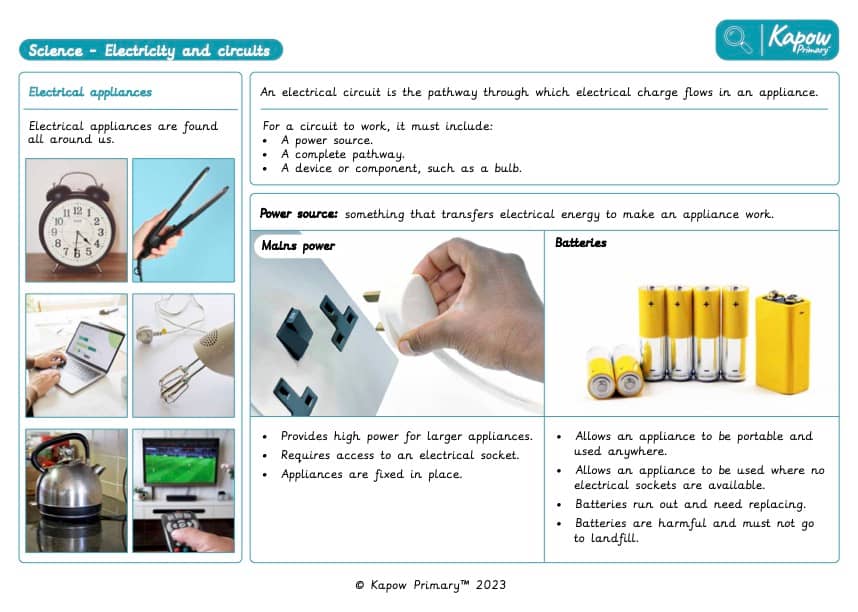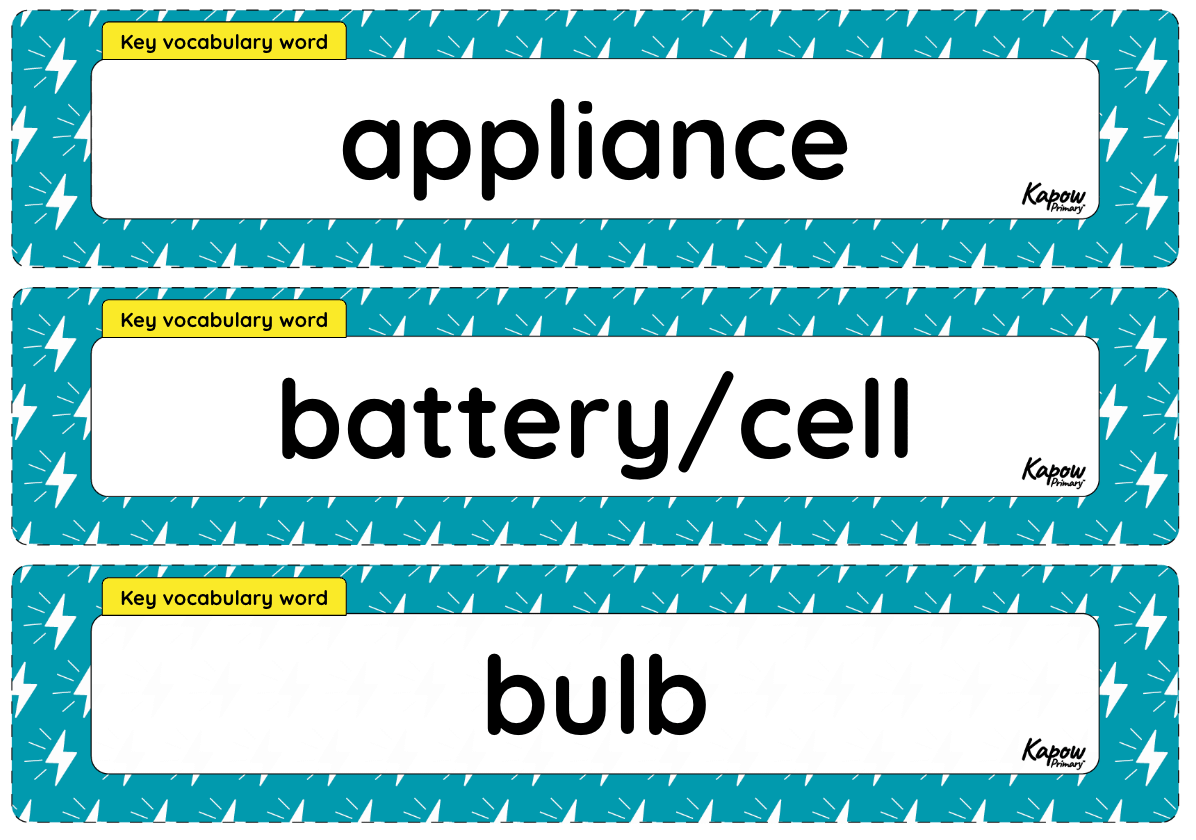Electricity and circuits
Exploring electrical components and conductivity through circuit building and real life applications.
The Curriculum and Assessment Review final report has been released. We’re reviewing the recommendations and planning for future updates. Learn more
- Subjects >
- Science >
- Key stage 2 >
- Year 4 >
-
Energy: Electricity and circuits
Unit outcomes
Pupils who are secure will be able to:
- Recall a range of electrical appliances, classify them as mains or battery-powered and explain why.
- Explain how to test if a circuit works and identify when simple electric circuits will work.
- Identify symbols for open and closed switches and give examples of how switches are useful.
- Predict whether a circuit will work based on whether the switch is open or closed and explain that it works by breaking and completing a circuit.
- Describe that a material is a good electrical conductor when it is added to an electric circuit and the bulb lights and that a material is a good electrical insulator when it is added to an electric circuit and the bulb does not light.
- Recall that metals, for example, are good electrical conductors and plastics, for example, are good electrical insulators.
- Describe that the more bulbs added to a series circuit, the dimmer the bulbs will be and explain that they will be dimmer when more are added to a circuit, as less energy is transferred to each of them.
- Describe precautions for working safely with electricity and explain some precautions using knowledge of circuit diagrams, electrical components, conductors or insulators.
When working scientifically, pupils who are secure will be able to:
- Draw a results table and record a range of appliances under the correct headings ‘Mains’ or ‘Batteries’.
- Identify and draw simplified electric circuit symbols and use these to draw a simplified circuit diagram.
- Write a method for the investigation that considers appropriate equipment, orders clearly written steps and considers safety.
- Pose questions relating to bulbs in an electrical circuit.
- Explain why a selected question is testable.
- Suggest that new inventions will change safety advice.
Please note that Kapow Primary Science lessons are designed to be 1 hour and 30 minutes long to reflect the requirements of a core subject.
Suggested prior learning
Energy: Light and shadows
Get startedLessons
Lesson 1: Using electricity
Knowledge
- To recognise how electrical appliances are powered.
Working scientifically
- To record and classify qualitative data.
Lesson 2: Building circuits
Knowledge
- To construct an electrical circuit.
Working scientifically
- To draw a scientific diagram.
Lesson 3: Switching on and off
Knowledge
- To explain the use of switches in a circuit.
Lesson 4: Investigating electrical conductors and insulators
Knowledge
- To explain the use of materials as electrical conductors or insulators.
Working scientifically
- To write a method.
Lesson 5: Investigating bulb brightness
Knowledge
- To investigate what affects bulb brightness.
Working scientifically
- To pose questions and plan ways to test them.
Lesson 6: Electrical safety
Knowledge
- To explain how to be safe around electricity.
Science in action
- To explore how scientific advances inform safety advice.
Key skills
Related content
Unit resources

Knowledge organiser – Science Y4: Energy: Electricity and circuits
Aimed at pupils, two pages providing key facts and definitions from the unit ‘Electricity and circuits’.

Vocabulary display – Science Y4: Energy: Electricity and circuits
A display version of the vocabulary for the unit ‘Electricity and circuits'.
Cross-curricular opportunities
English: Spoken language; Writing – composition.
Design and technology: Technical knowledge.
British values: Rule of law; Mutual respect.
RSE & PSHE.

